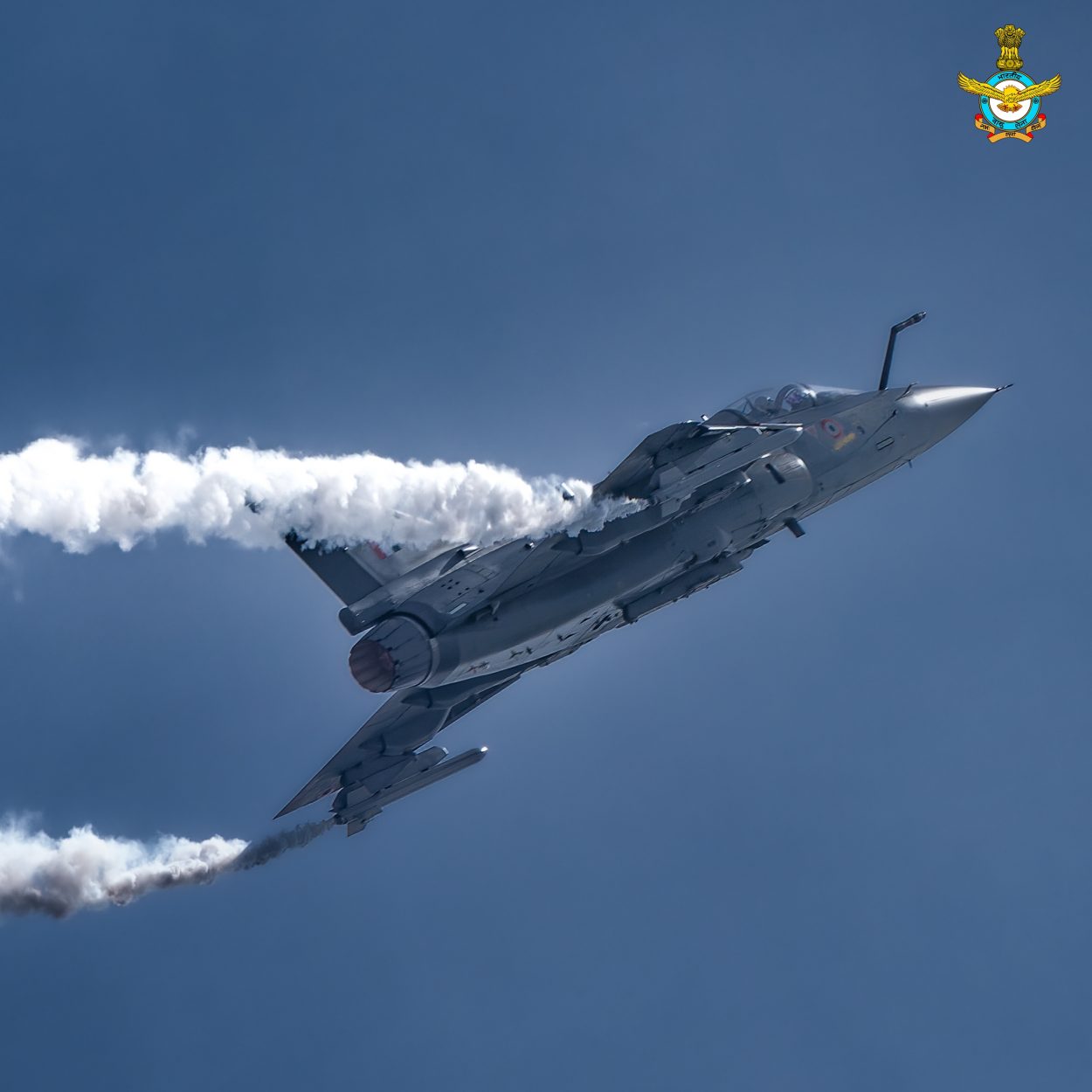India has begun ‘secret tests’ of the new Mk1A variant of its home-grown light combat aircraft (LCA) Tejas, according to recent media reports.
Adios GPS! US Air Force To Dump ‘Vulnerable’ GPS For NTS-3 As Russia, China Wield Laser, EW Prowess
The LCA Tejas Mk 1A started its maiden flight trials in the first week of May, reported The Indian Express, citing sources from Hindustan Aeronautics Limited (HAL).
The LCA Mk1A is an upgraded version of the LCA Mk1 that reached Full Operational Capability (FOC) in 2020, and it will serve as a testbed aircraft for the production line of Mk 1As.
Currently, the Indian Air Force (IAF) operates 40 Tejas Mk1 aircraft. In January 2021, the IAF awarded HAL a contract worth $6.07 billion for 73 Tejas Mk1A fighter aircraft and 10 LCA Tejas Mk1 trainer aircraft.

As per the contract, HAL must deliver the first three aircraft in 2024 and 16 aircraft annually for the next five years.
The flight trials were kept secret because HAL said the flights were part of production activities. “We are geared towards ensuring that the aircraft are delivered to the Indian Air Force (IAF) on time and schedule by 2024,” the HAL source told Janes.
Mk1A Vs. Mk1
The IAF was reportedly unhappy with the LCA Mk1, as it did not meet its operational requirement. Therefore MK 1A program aims to improve the Tejas LCA’s operational capabilities based on the feedback from the IAF.
Among the shortcomings IAF pointed out in the Mk1 were increased weight and reduced speed, which adversely affected the aircraft’s performance. The new Mk1A will feature better composites to reduce the airframe weight and an increased number of aerodynamic pylons to reduce the supersonic drag.
The LCA Mk1 was also deficient in Electronic Warfare (EW) capabilities, as there were performance issues with the Radar Warning Receiver and Counter Measure Dispensing System (CMDS). The IAF wanted a Self Protection Jammer (SPJ) for Electronic Counter Measures (ECM) purposes which were also lacking.
In the Mk1A variant, the issues with RWR and CMDS have been cleared, and a podded active jammer will be fitted to meet the IAF’s ECM requirements.
Furthermore, the Mk1A variant will feature the indigenously built ‘Uttam’ Active Electronically Scanned Array (AESA) radar that can track 50 targets in the sky at a range of more than 100 kilometers and engage about four of them at the same time, as per the claims by Defence Research and Development Organization (DRDO).

Although the first 16 Tejas Mk1As will be equipped with Israeli ELM 2052 AESA radars, the rest will have the indigenous Uttam radars.
Regarding armaments, the Mk1’s weapons package included the Vympel R-73 short-range missile with infrared homing and the Israeli-made ‘Derby’ beyond-visual-range air-to-air missiles (BVR-AAM) from Rafael Advanced Defence Systems.
The R-73 has a range of 40 kilometers, whereas the Derby is a short-to-medium BVR missile with a range of 50 kilometers.
The new Tejas Mk1A can also be armed with the indigenously manufactured Advanced Short Range Air-to-Air Missile (ASRAAM), which has a range of 25 kilometers, and the indigenously developed Astra BVR missile with a range of 80 to 110 kilometers. It can travel at 4.5 Mach speed (almost hypersonic).

The Tejas Mk1A will also feature precision warfighting capabilities enabled by a digital moving map with 2D maps and 3D perspective view, provisions for GLONASS (Global Navigation Satellite System), the Indian Regional Navigation Satellite System (IRNSS)-based positioning system, GAGAN (GPS-aided geo-augmented navigation) and SBAS (Satellite-based Augmentation system).
The Mk1A also features a mid-air refueling probe, which will significantly improve its operational range, thereby allowing the Tejas to remain airborne for much longer durations.
The New Tejas Mk2
HAL is also working on another upgraded aircraft variant, the Tejas Mk2, which is expected to begin flights by 2023.
The Mk2 will be a medium-weight fighter (MWF) with an enlarged airframe and increased maximum take-off weight of 17,500 kilograms, up from the LCA’s 13,500 kilograms. The aircraft will have a longer fuselage that will allow more fuel storage.
Also, the Tejas Mk2 will be powered by an upgraded General Electric (GE) F414-INS6 engine, which is more potent than the GE F404 that power the Mk1 and Mk1A variants.
The Mk2 will also have a larger weapons payload capacity of 6.5 tons compared to the roughly 4.35 tons payload capacity of the Mk1 and Mk1A.
- Contact the author at tanmaykadam700@gmail.com
- Follow EurAsian Times on Google News




